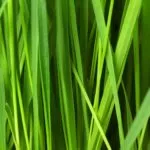10 Interesting Facts about Turf You Never Knew
Before investing in new turf, it is important to make sure you know the ins and outs of what you are getting yourself into. Anyone can find out which type of turf will best suit their lifestyle, however, have you ever wondered about turf as a wider subject? We thought it might be interesting to collate a few fun facts about turf on a wider spectrum, going into a bit more detail about the intricacies of the product that is our namesake.
Take a look at our 10 interesting facts about turf, we bet they surprise you!
- Did you know, eight average lawns have the cooling effect of 70 tons of air conditioning. The average air conditioner has a capacity of around 3-4 tons depending on its size!
- 55 feet squared of turf can provide enough oxygen for one person to breathe for a whole day.
- The cycles and growth of grass and lawns can positively effect people’s moods. It has been shown that hospital patients with views into landscapes tend to recover more quickly than those without a grassy, green view.
- In an average-sized lawn of about 800 square feet (75 square metres), there are almost 424 million kilometres of root. That’s enough to wrap around the circumference of Earth 10,000 times. In fact, it’s enough to get you to Mars and part way back!
- An average sized garden can absorb more than 22,000 litres of rainwater at a time.
- You might assume that a blade of grass is the weightiest part of the grass plant. However, the roots actually make up about 90% of the weight of grass.
- Did you know that there are more than 10,000 types of grass? In addition to lush green turf, rice, wheat, corn, bamboo, and sugar cane are all varieties of grass as well.
- Home lawns help purify water entering underground aquifers because root mass and soil microbes act as a filter to capture and breakdown many types of pollutants.
- Grass very effectively prevents erosion because of its extensive root system.
- A football field of an average size produces enough oxygen to offset almost 2,000 km of driving and do the work of 327 trees every day. A single field also produces enough oxygen for nearly 14 people to breathe on a daily basis.


